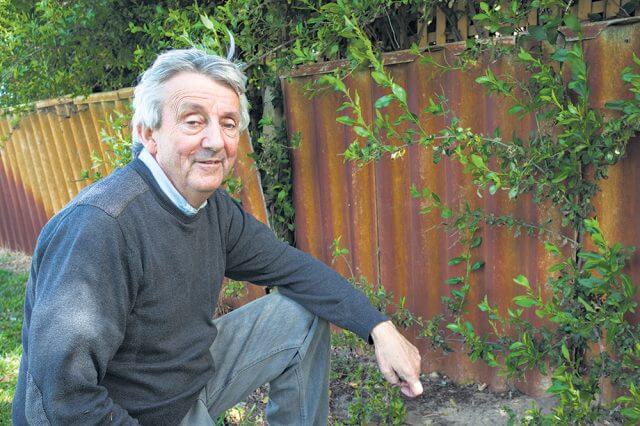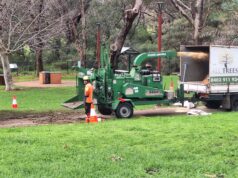
An East Cannington resident has called on the City of Canning to toughen up its asbestos fencing policies after he found trees brushing against an asbestos fence at a property next to East Cannington park.
Desmond Bowers found the fence and said the trees scraping against it could lead to asbestos exposure for anyone walking by.
Asbestos products were used in homes including fencing up until the 1980s.
Mr Bowers said the city needed to push property owners to replace asbestos material in their homes faster and install signage on fences to warn people.
“I’ve been trying for two years to have the fence removed, it’s an asbestos fence which has fallen into the park with the trees next to it so it’s rubbing against the asbestos and sending the fibres about,” he said.
“With children walking through there, there are probably 20 people a day walking by it.
“There’s another few in Queens Park at the main rec centre, the fence line at the back there is asbestos and it’s crumbling.
“All fences need to be checked and removed, if they’re going to give them a year to remove it then they need signage.”
He said they should also do an audit of all asbestos fencing in public spaces.
“They should inform the public, which parks have asbestos fences and which haven’t,” he said.
“Those with asbestos should be blocked off and signed off so the public does not get in contact with them.”
A City of Canning spokesman said a complaint had been lodged with the city recently about the East Cannington park fence and they were working to resolve the issue.
“The city is in discussion with the owner regarding options for the removal of the fence,” he said.
When asked whether the city’s current asbestos policies were risking public health the spokesman said the city used safe practices consistent with industry standards whenever dealing with asbestos.
“The city requires that any one undertaking asbestos removal follows the city’s asbestos removal guidelines,” he said.
“Generally undisturbed asbestos cement products do not pose a health risk, as the fibres are bound together in a solid cement matrix.
“It is normally only when asbestos products are highly weathered or damaged that they may present an exposure risk.”
The current regulated asbestos workplace limit (over an eight-hour period) was 100 fibres per litre of air (which is between 500 and 10,000 times background levels).
In the past, workers in asbestos milling or mining often encountered fibre concentrations a million times higher than background levels.













